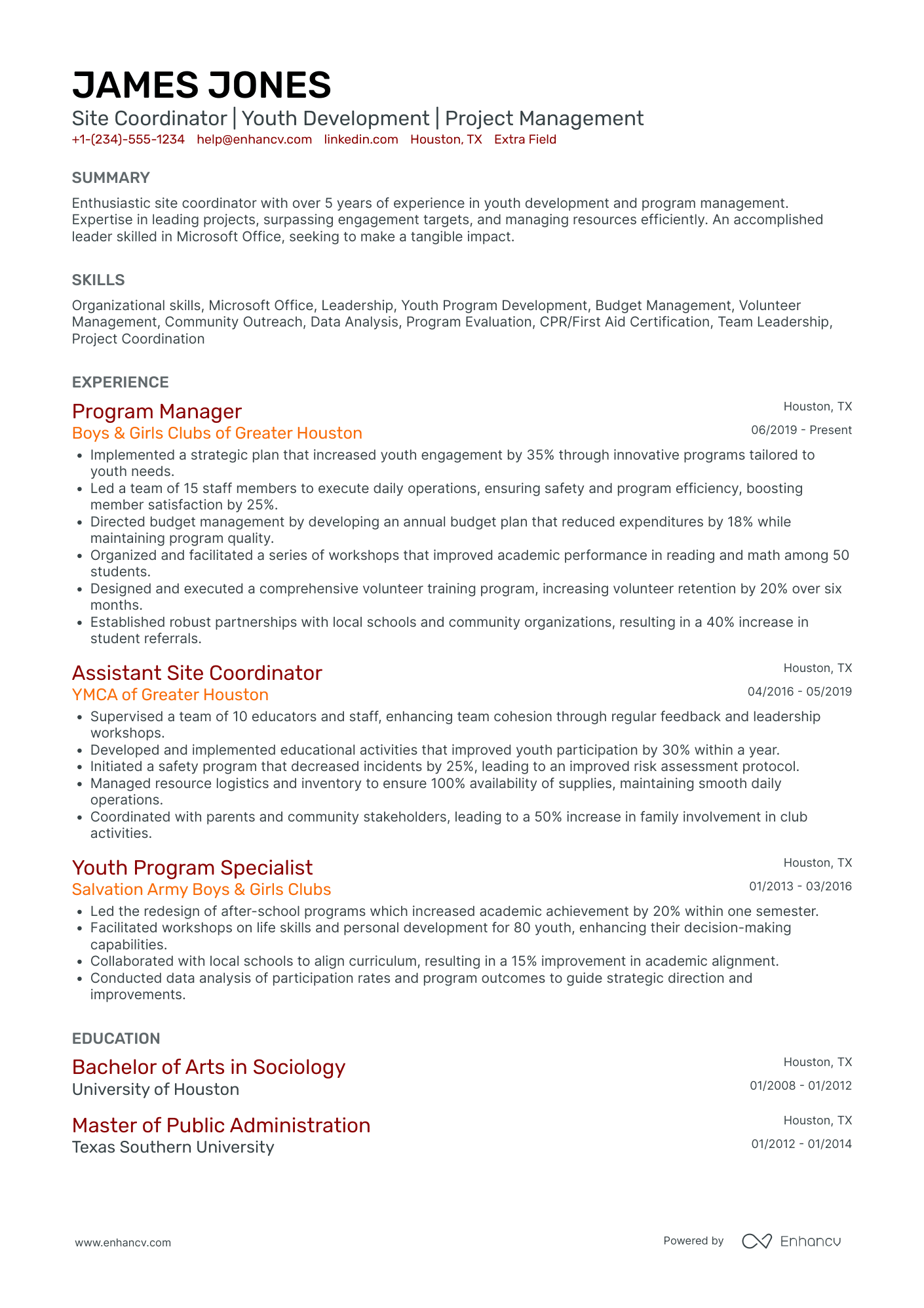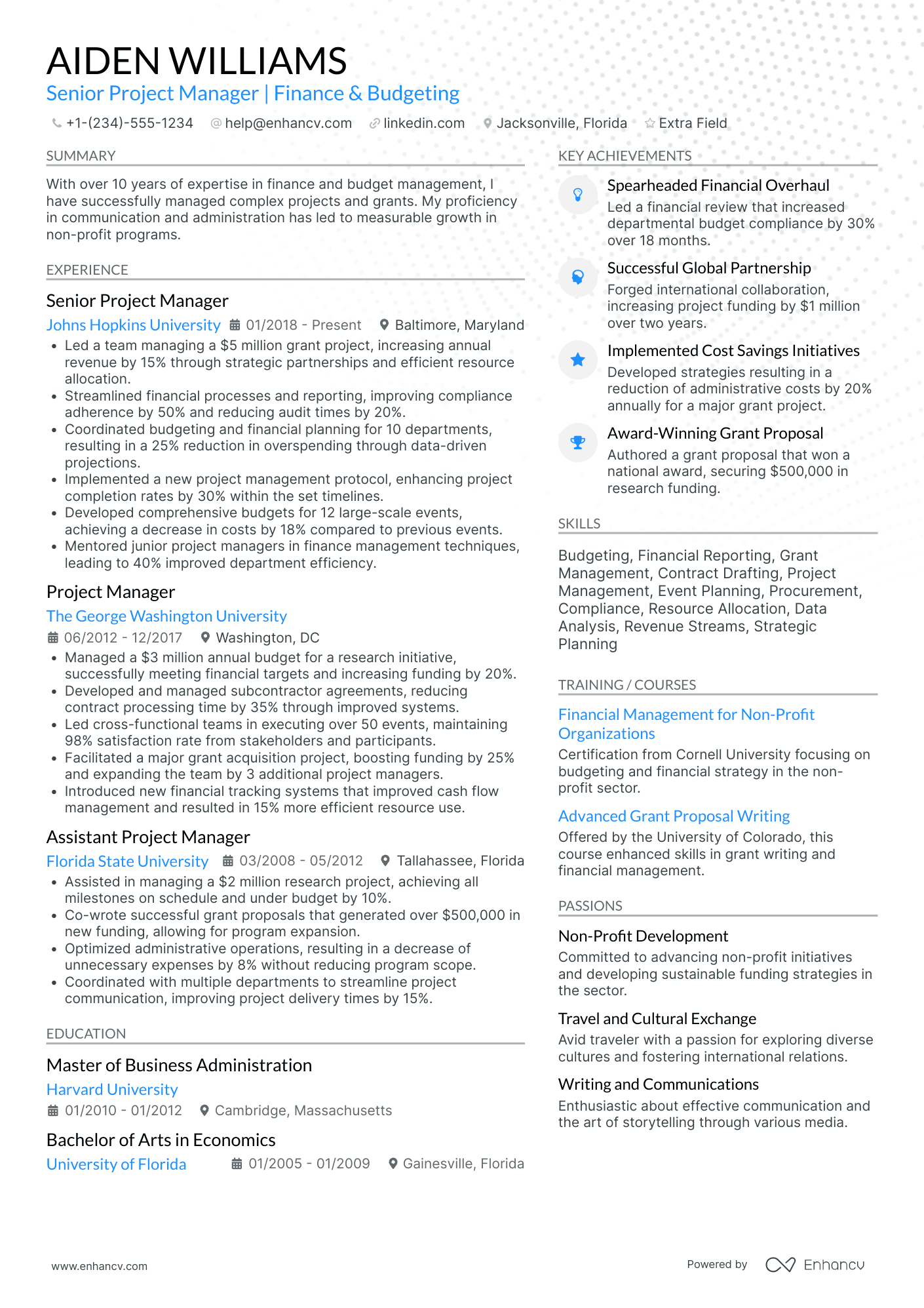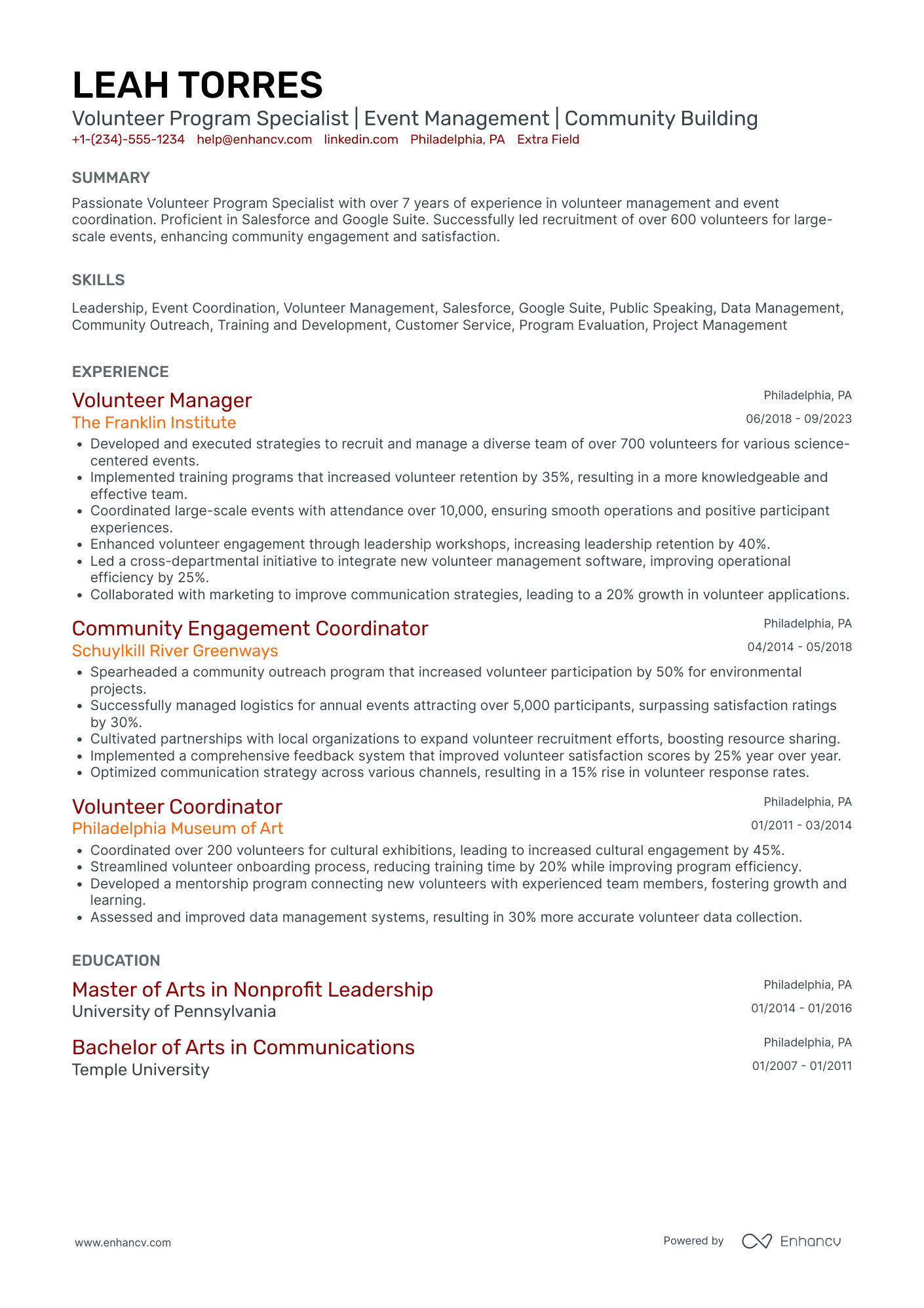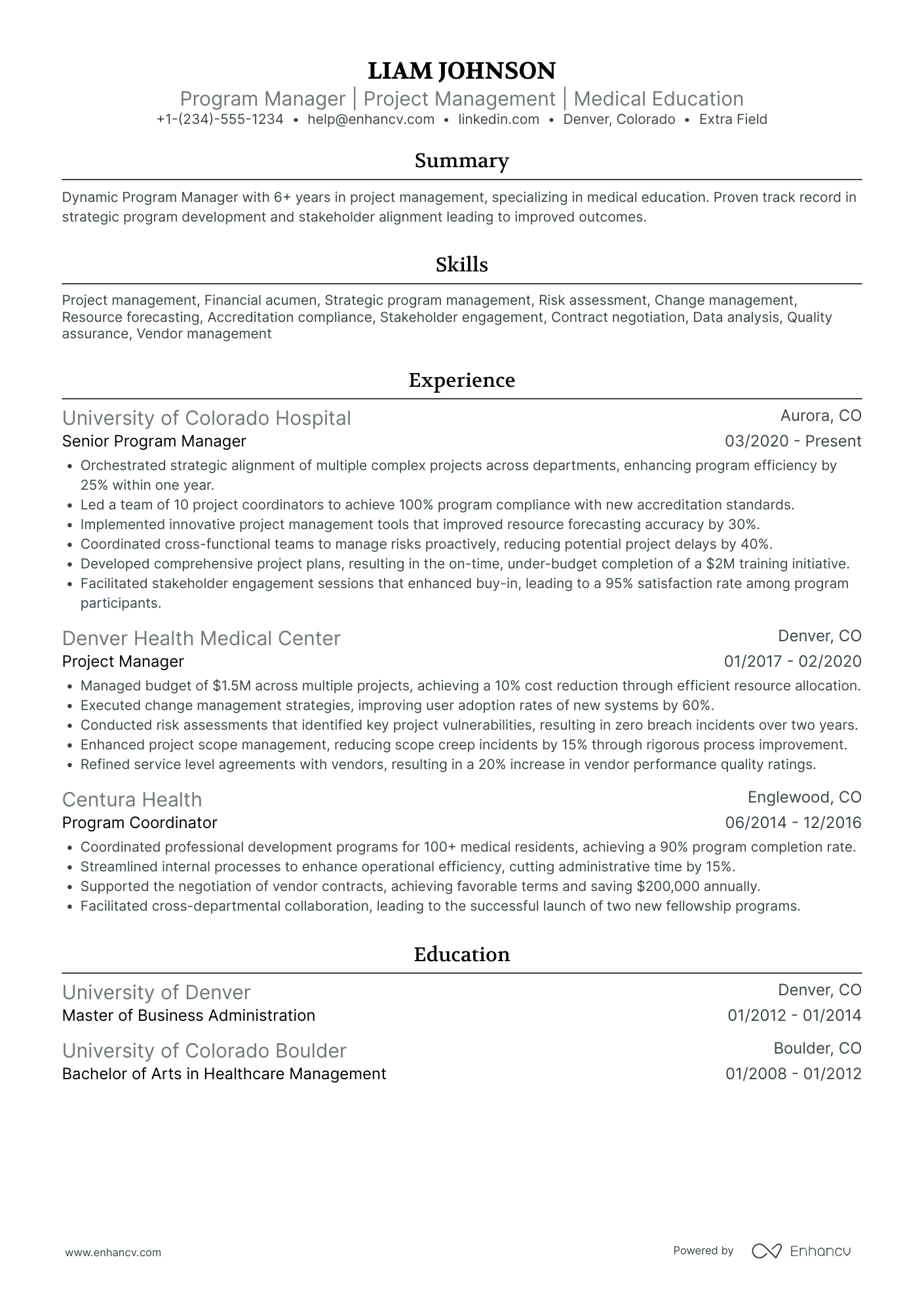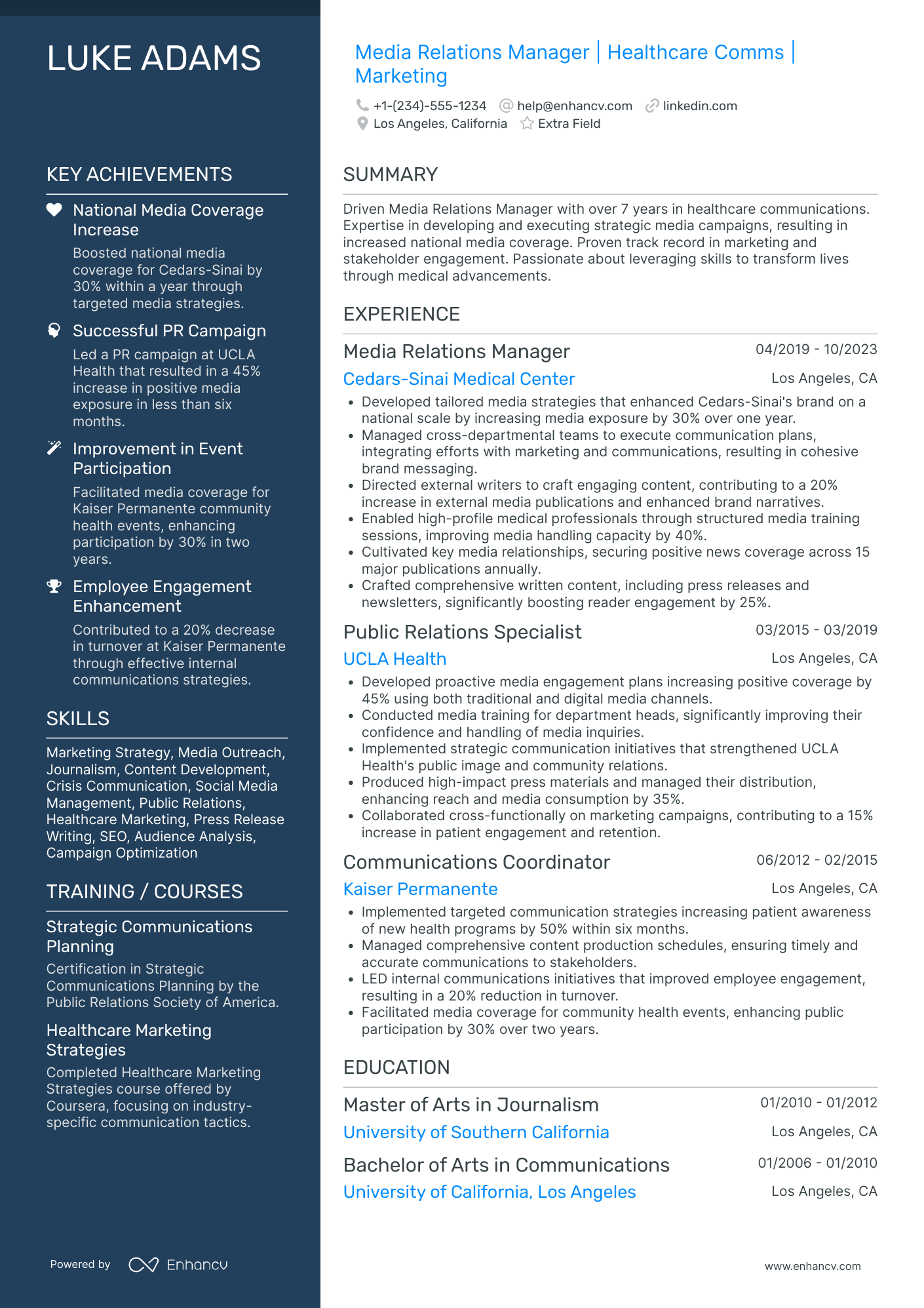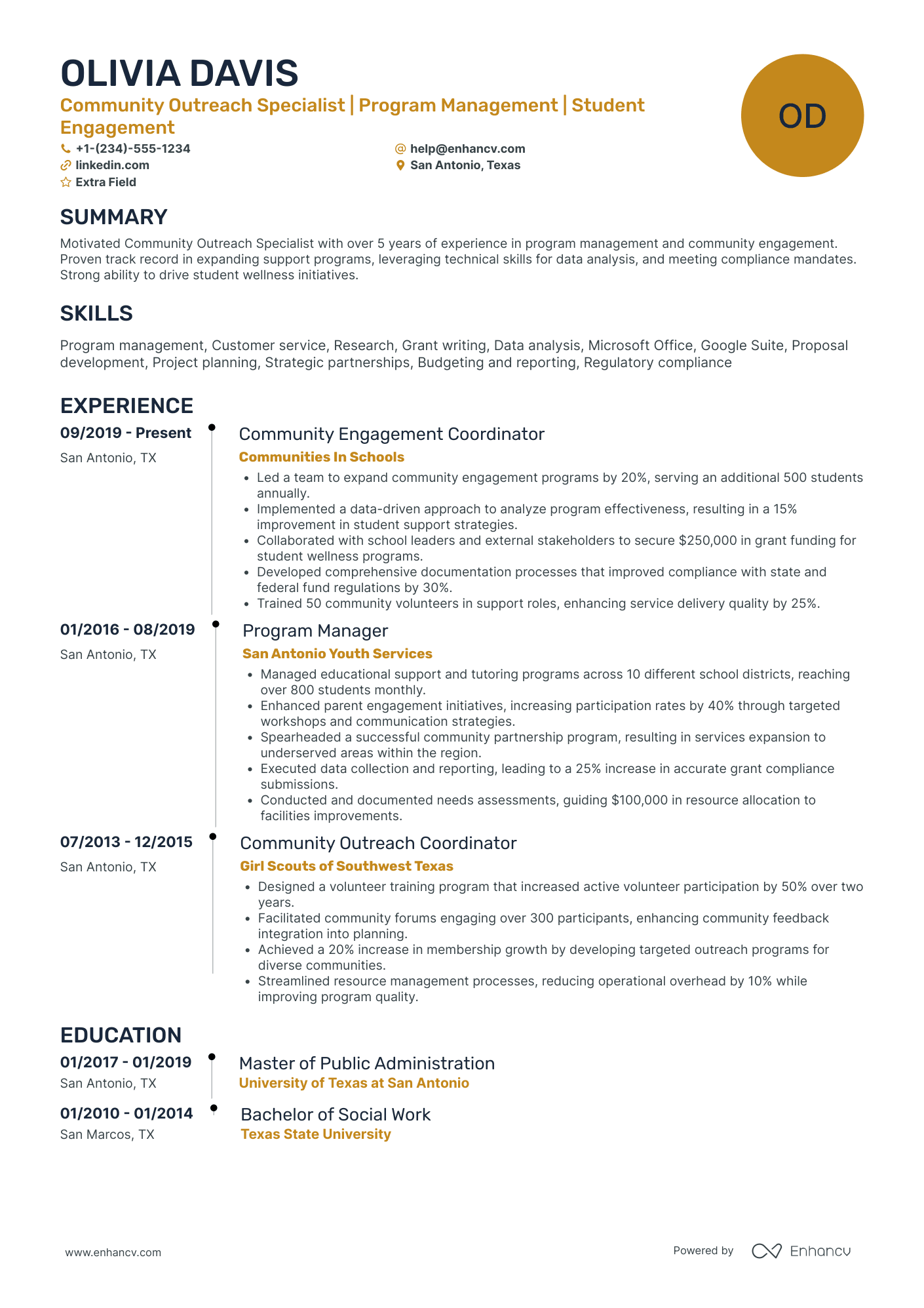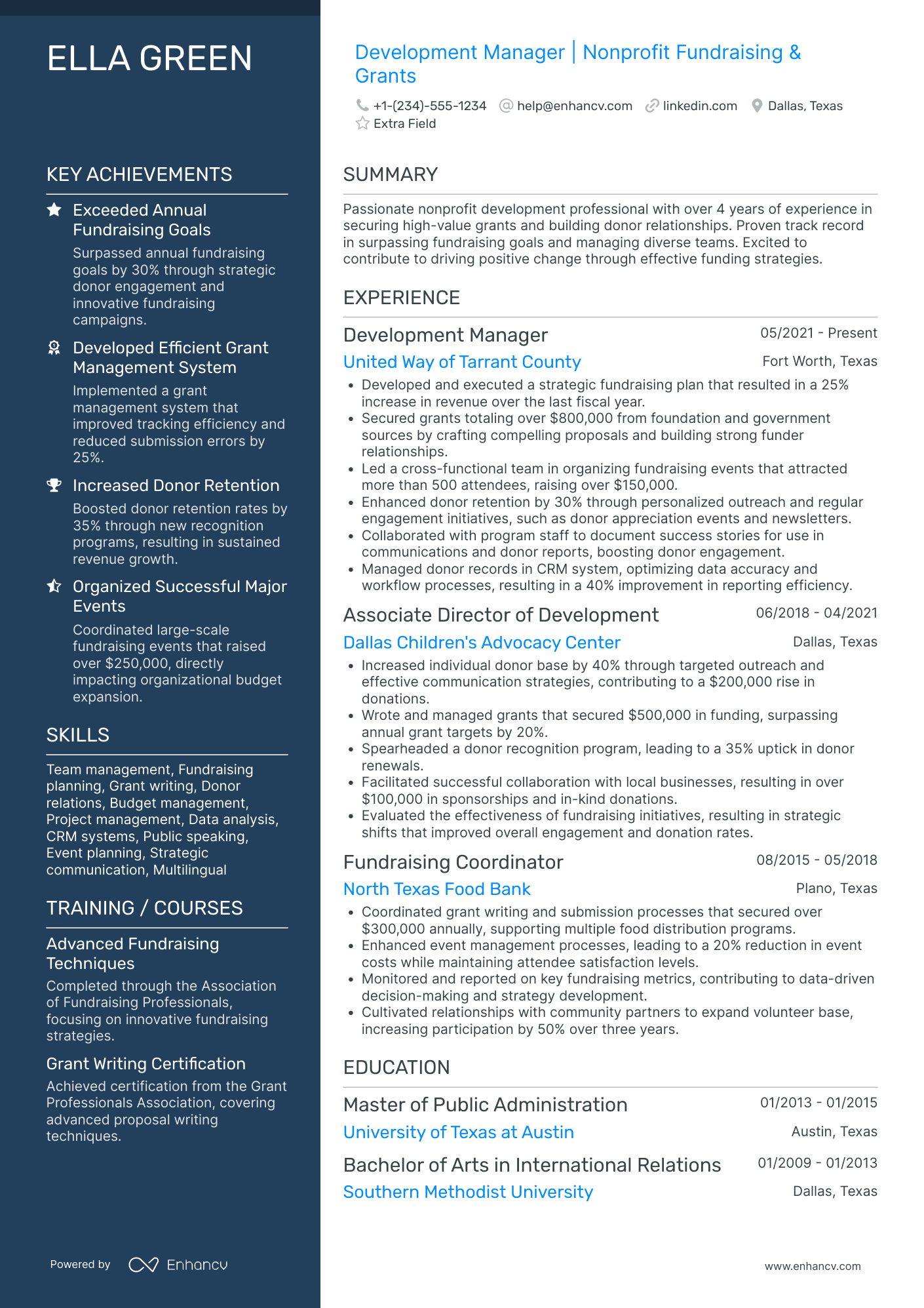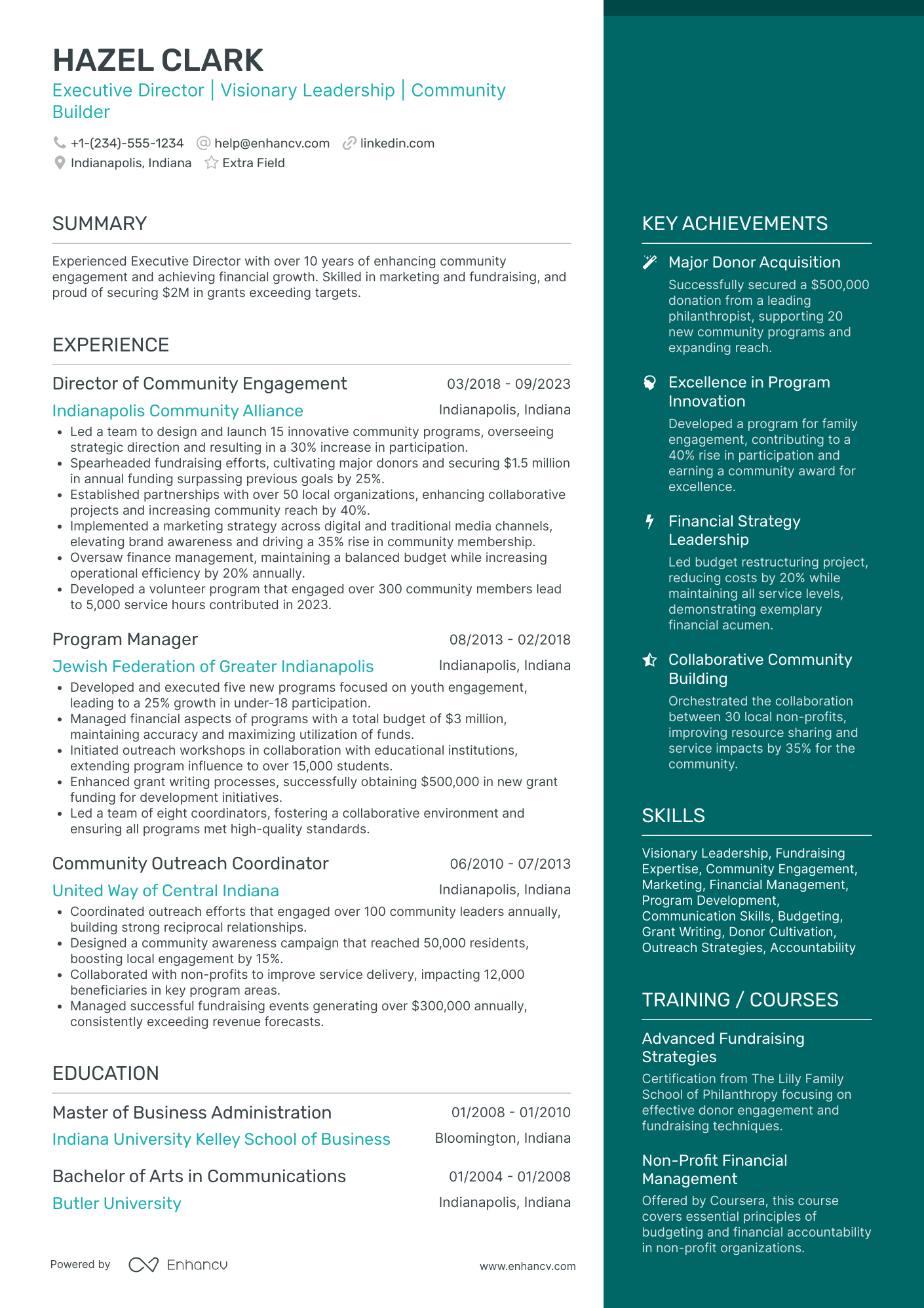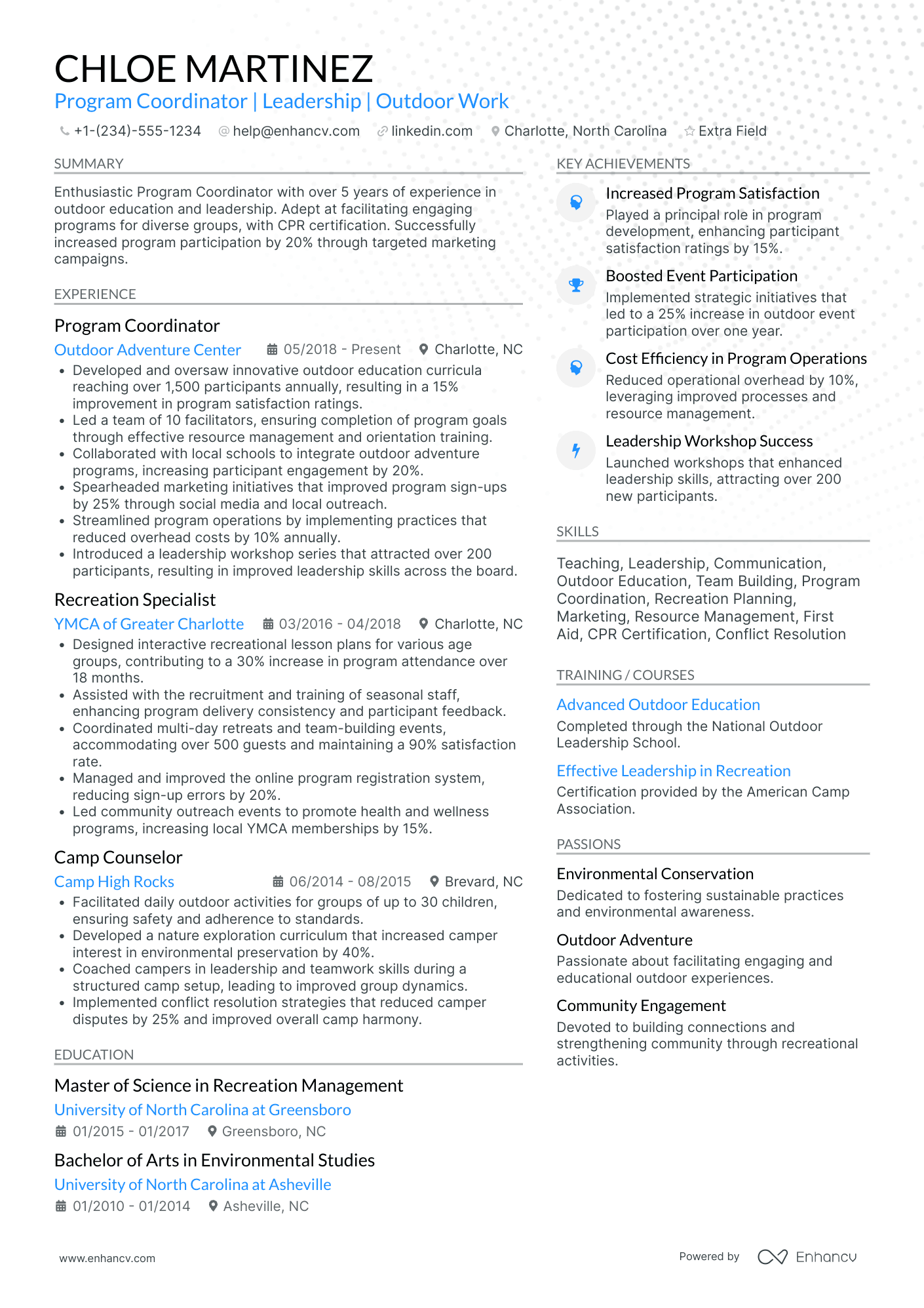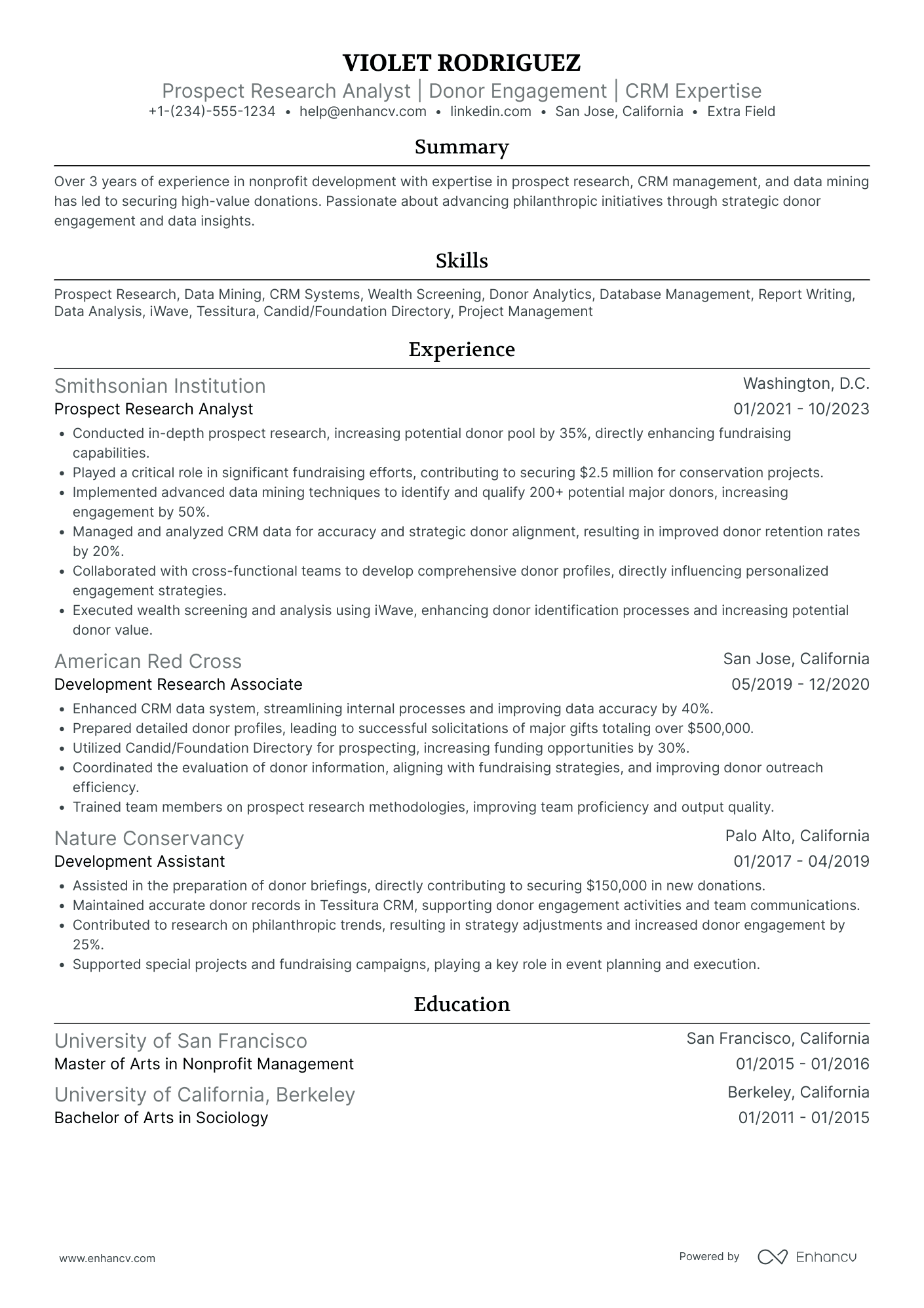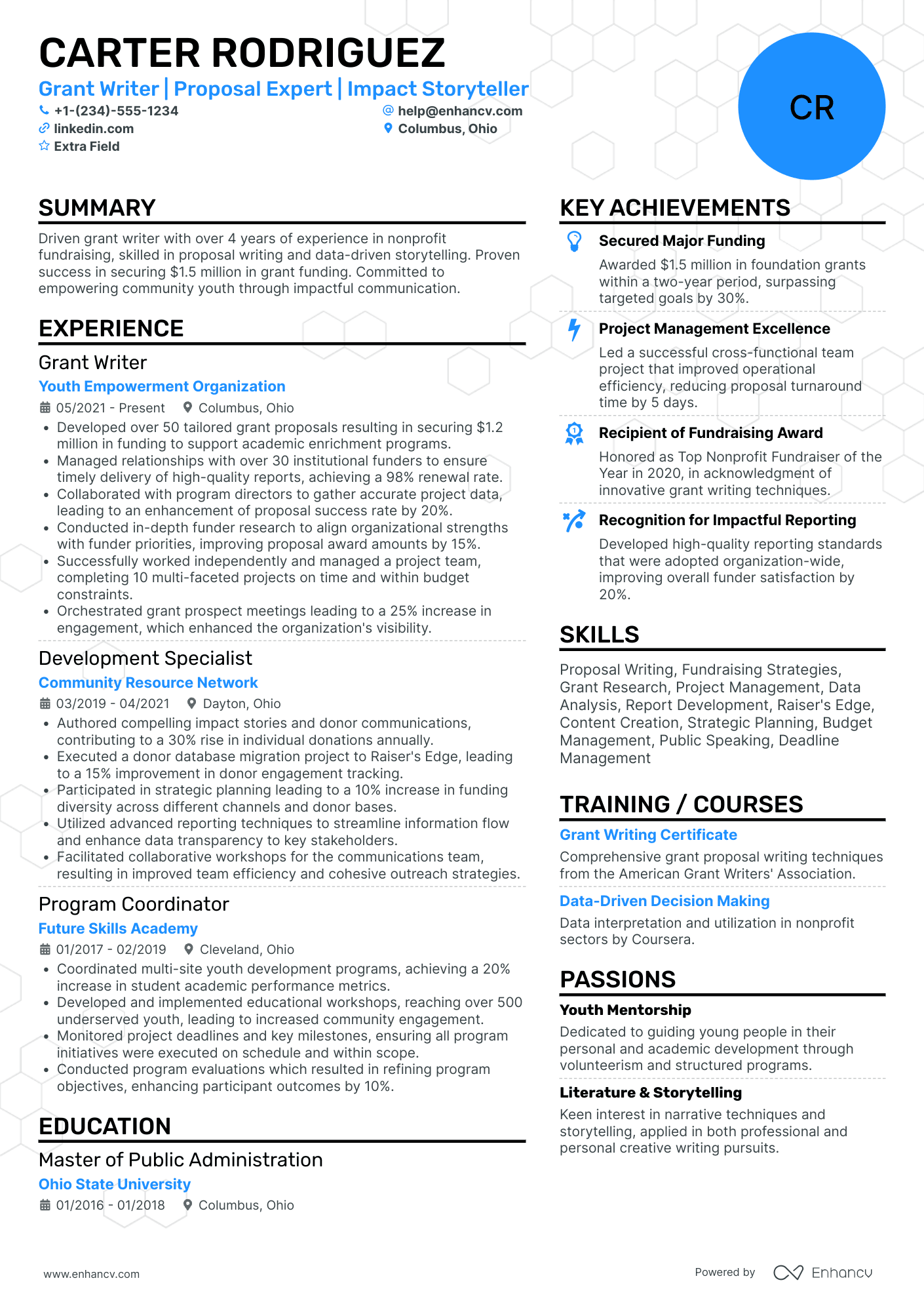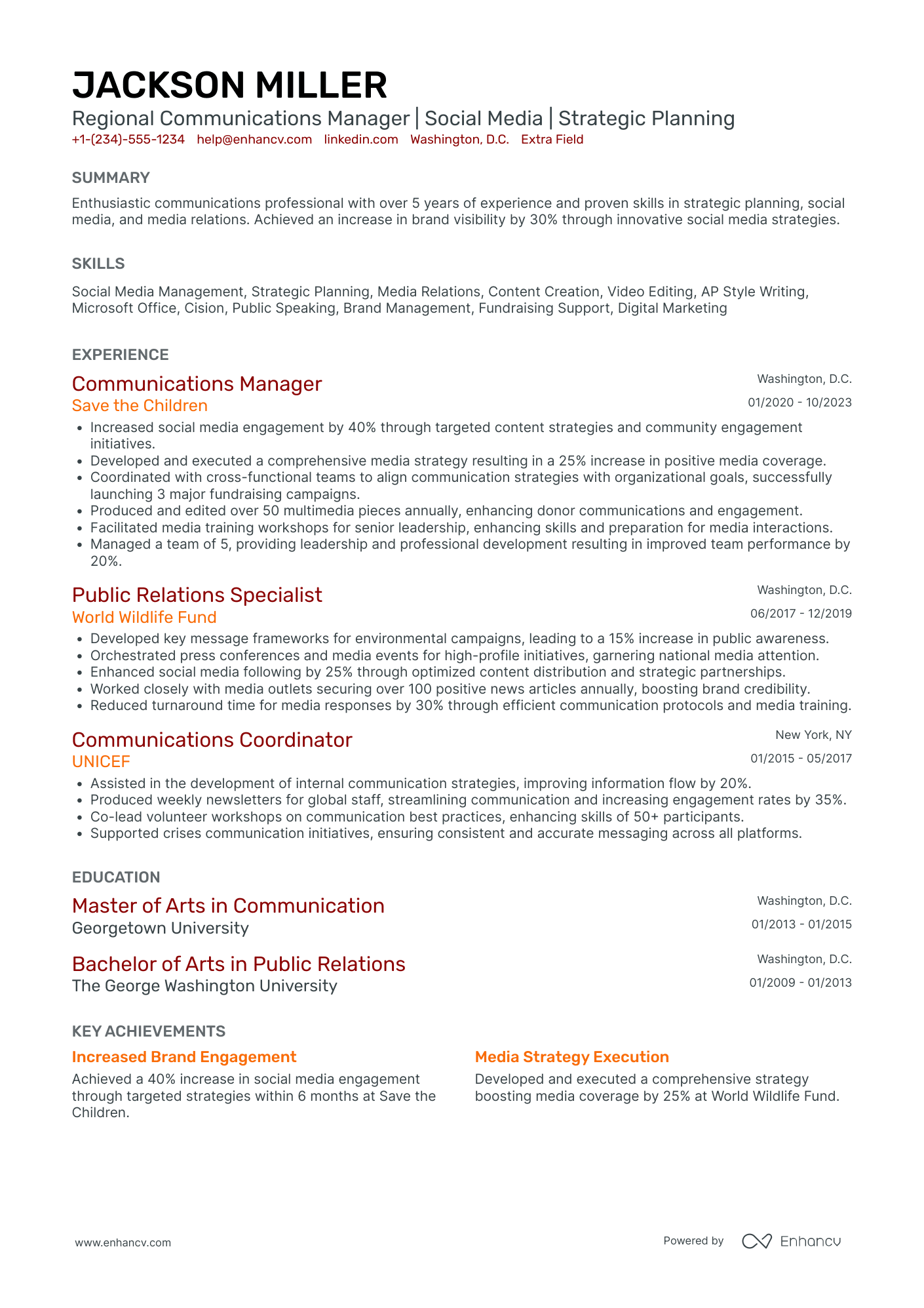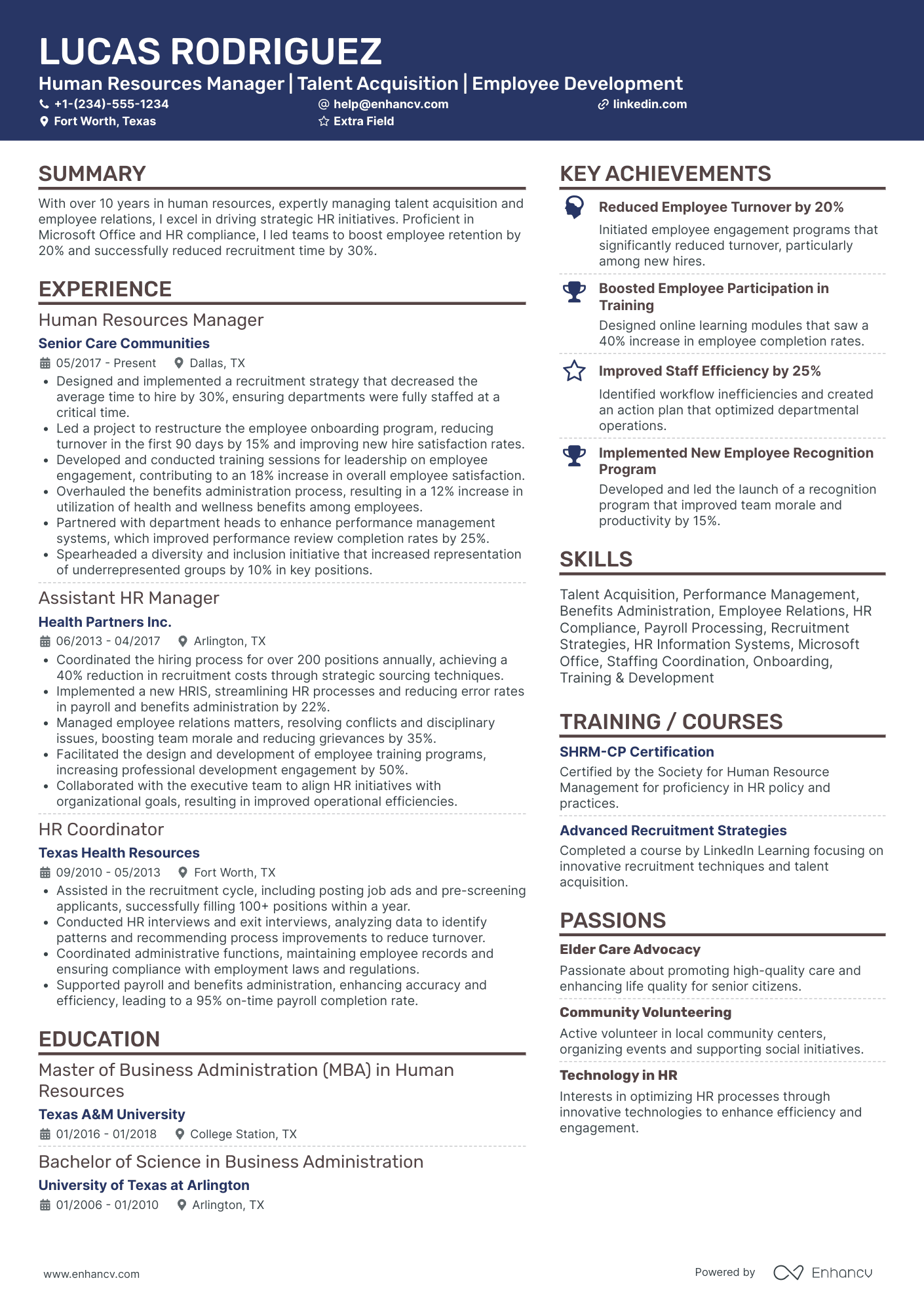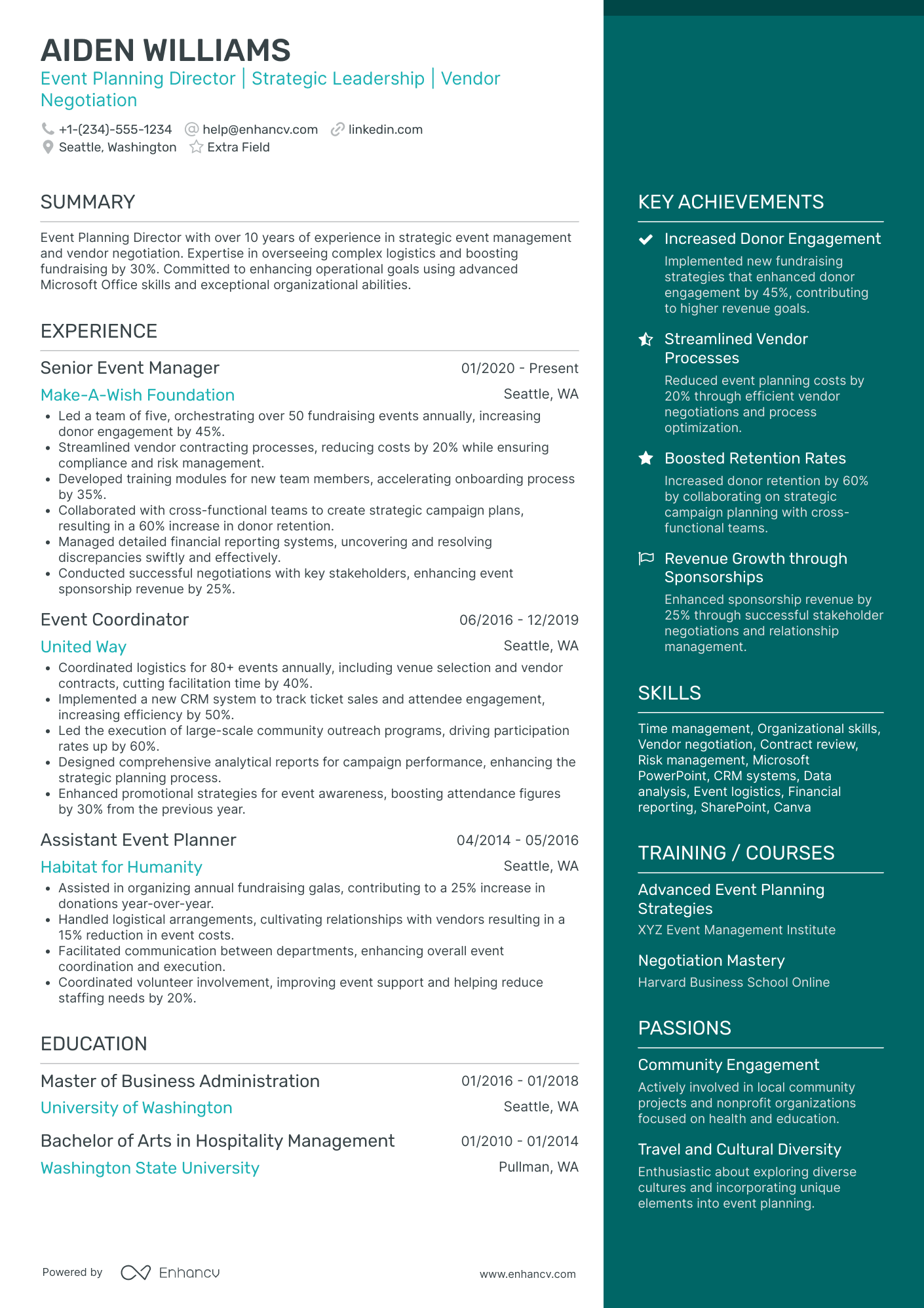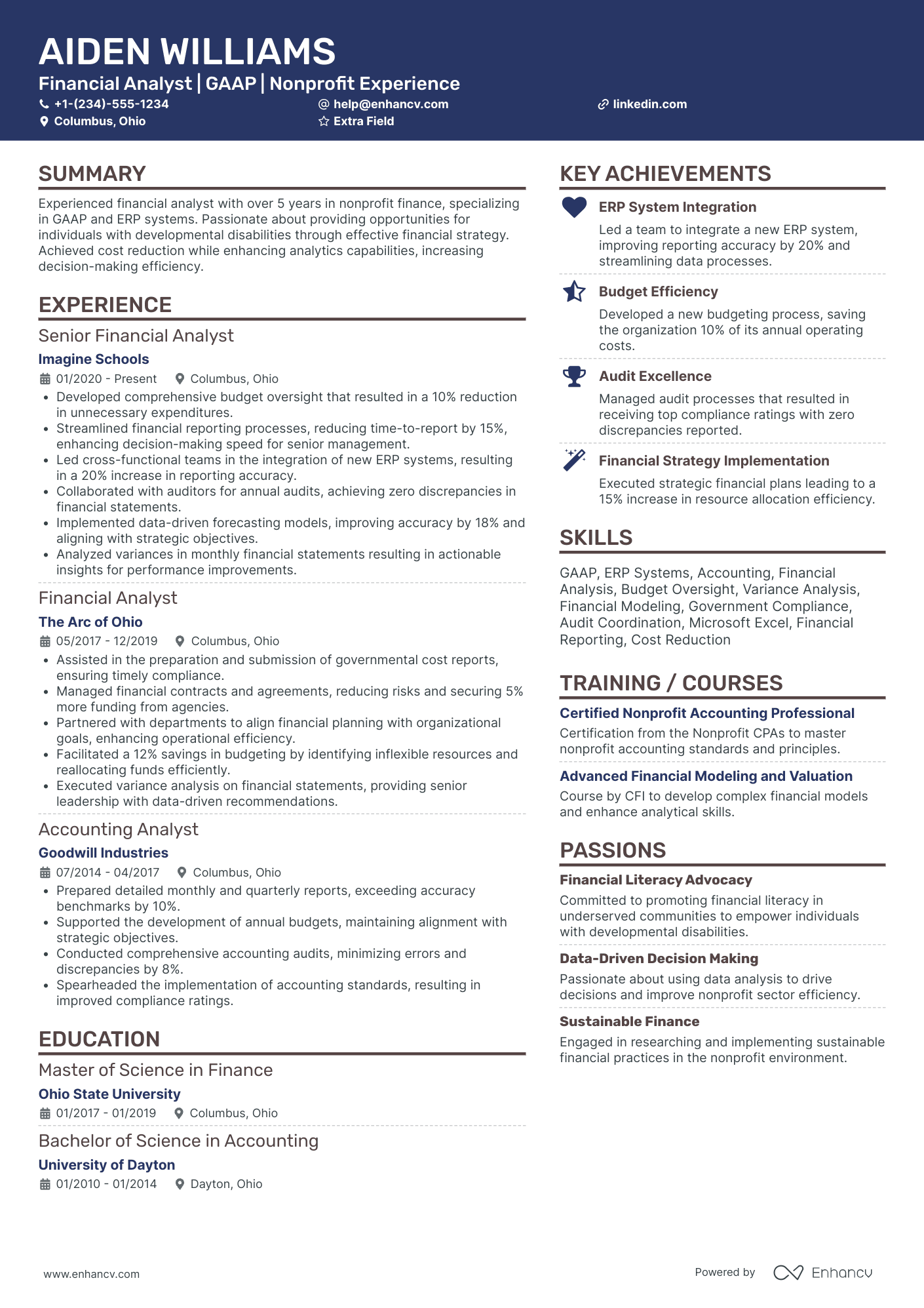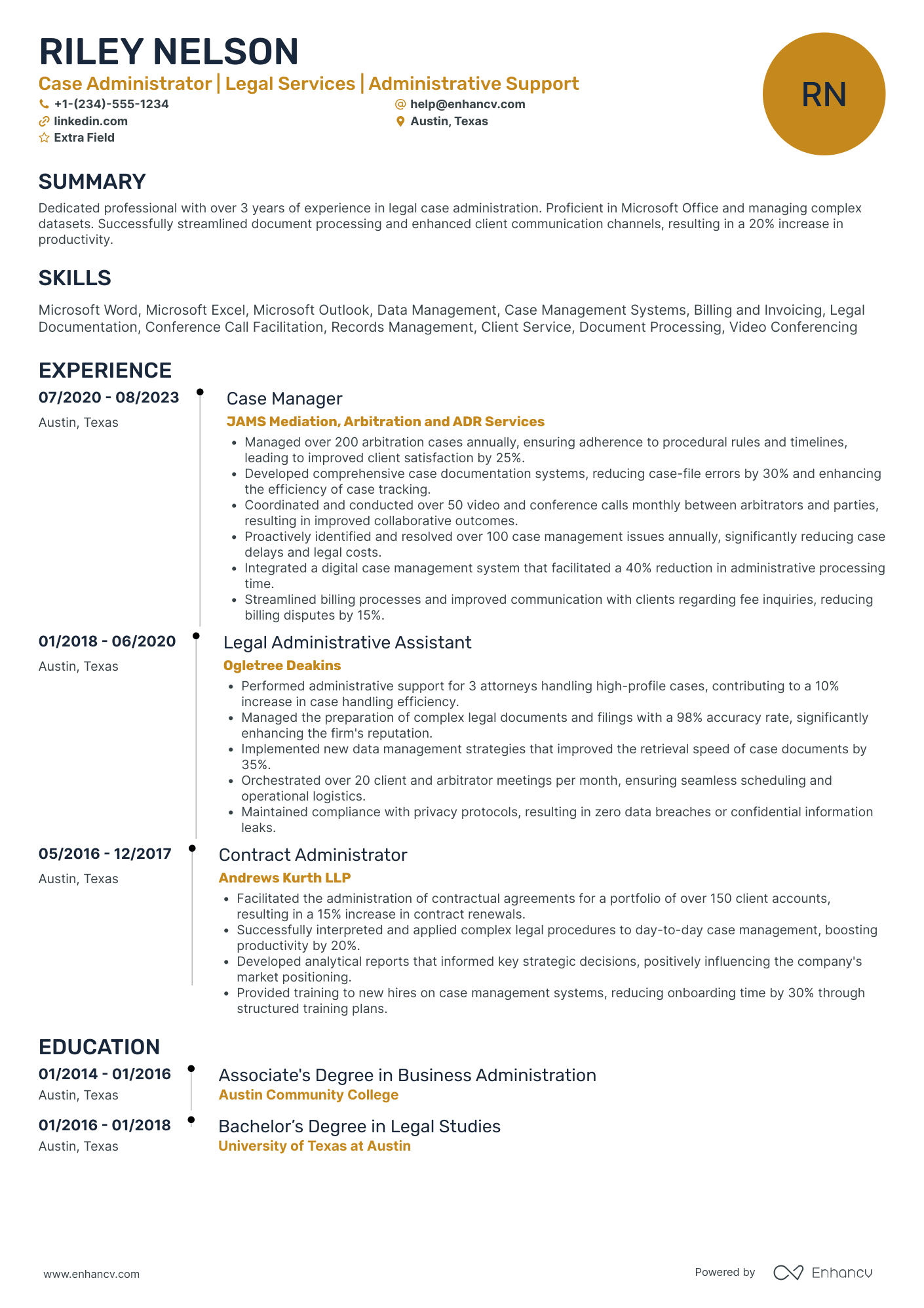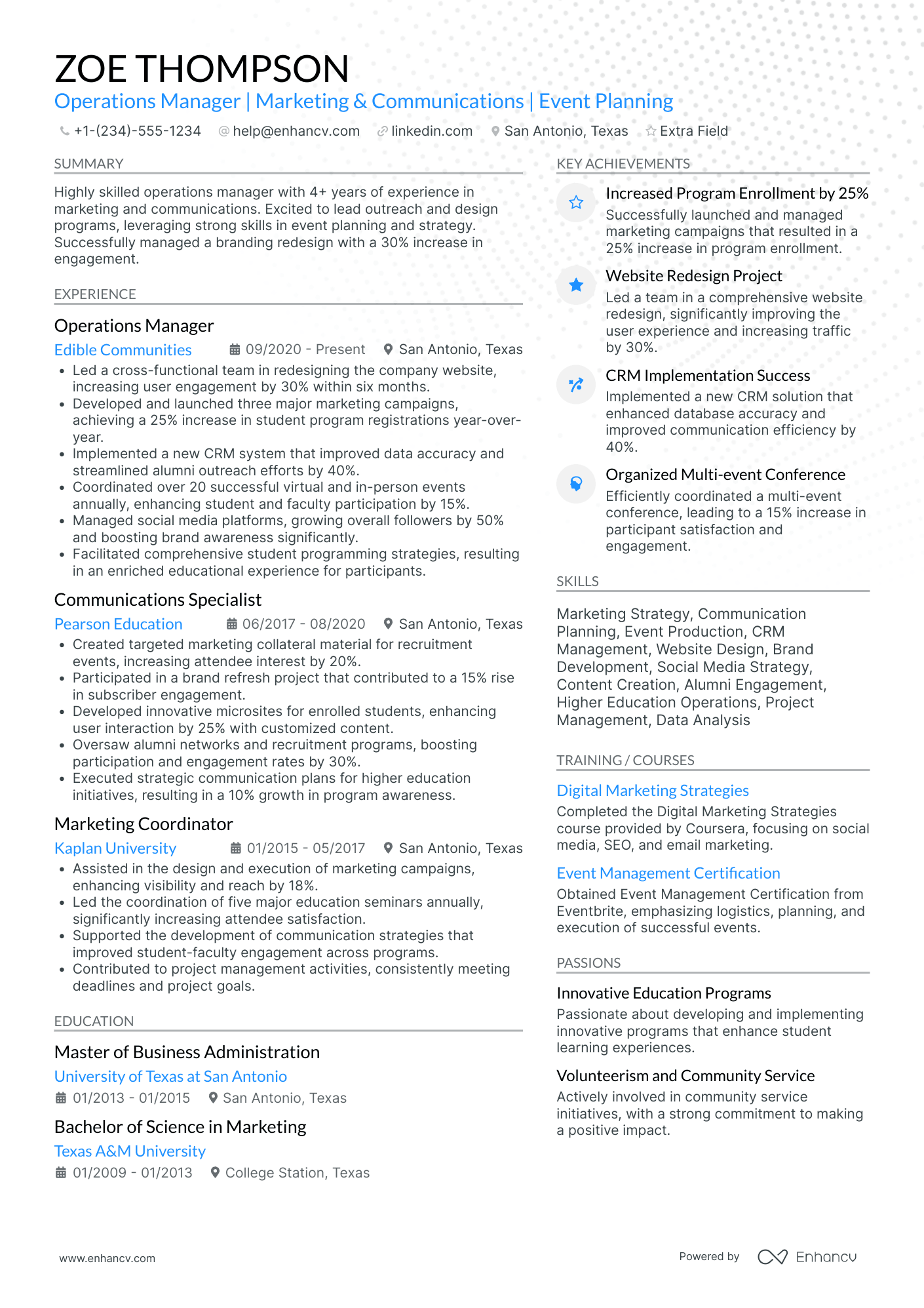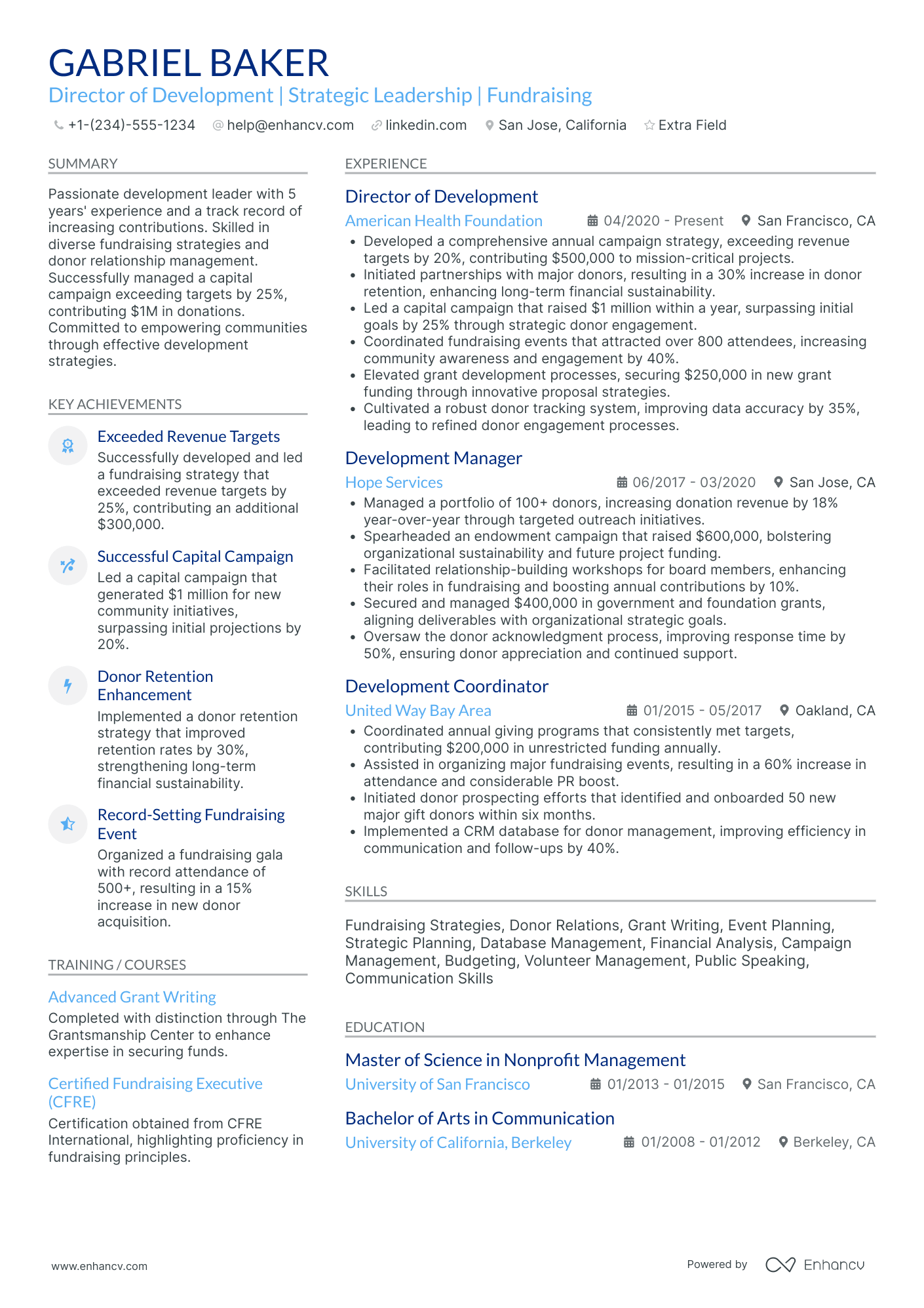You would describe yourself as a mission-driven individual. You have no doubt that your skills and expertise could add value to any organization.
What’s more, you’re passionate about solving local or global issues in the best way possible.
You are also a person who wears multiple hats and has various interests.
You know this. Your friends and family know this. But how do you prove it to recruiters?
Well, by crafting a well-written non-profit resume that highlights your relevant experience, skills, and achievements.
On one hand, your resume needs to show that you’ve got enough in-depth knowledge of the NGO industry. On the other, it has to point recruiters to the fact that you’re eager to learn and grow as a professional.
Sounds difficult? Don’t worry - we’ve cracked the code.
Don’t tell us all the reasons this might not work. Tell us all the ways it could work.
John Wood, Founder of Room to Read
This non-profit resume guide will help you:
- Build a job-winning resume to impress recruiters
- Learn what the most important sections for your non-profit resume are
- Describe your experience in an inspiring and thoughtful way
- Use your achievements to prove you’re a strong candidate
- Highlight your various interests and skills without appearing confused or chaotic
Looking for related resumes?
- Communications Manager Resume Example
- Social Media Coordinator Resume Example and Guide
- Program Director Resume Example
- Marketing Assistant Resume Example
- Administrative Assistant Resume Example and Guide
- Project Coordinator Resume Example
- Office Assistant Resume Example
- Program Coordinator Resume Example
- Volunteer Resume Example and Guide
The non-profit resume: all you need to know
Regardless of whether you’ve been in the NGO sector for a while now or are looking for a career change, there are certain things you need to have in mind when building your non-profit resume.
Let’s start off by looking at the most popular resume formats.
If you’re a professional who wants to put emphasis on your experience, go for the reverse-chronological resume. It allows you to list all your relevant positions in a reverse-chronological format and is a great way to show how you’ve grown over the years.
But if you’re someone who’s just starting their career, choose the functional resume. It has a skill-based layout that focuses on your interests and qualifications, rather than on your experience.
And if you’re looking to spice things up – then the hybrid resume is what you need. This resume format is a combination of the reverse-chronological and the functional resume formats.
What’s more, it helps you express your identity in an authentic yet professional way. It’s great for showcasing all your skills and interests. And that’s something non-profit organizations value highly.
After you’ve chosen the format of your non-profit resume, you need to add some resume sections.
Sections your non-profit resume needs to have:
- A header box for your contact details - including name, phone number, e-mail address, and LinkedIn profile
- A resume summary to highlight your top accomplishments and skills
- An experience section to prove you have all it takes to be a successful candidate
- A skills section to pass applicant tracking systems (more on that later) and boast your talents
- An education section to show you have the theoretical knowledge
- A certifications section that proves your skills further
Due to the fact that this sector is a mission-driven one, the number of applicants recruiters have to deal with is huge.
So, how do you stand out as the best applicant for your non-profit job of choice?
Things to add that can help you stand out from the crowd:
- Focus on skills that are relevant to your non-profit job - no ‘Adobe Photoshop’ if you’re seeking to become a financial analyst
- Mention valuable projects you’ve led or participated in
- Share more about your ability to work in a team
- Show you’re able to wear multiple hats - especially if you’re applying for a job at a smaller NGO
- Prove your strong work ethic by talking about times when you had to push extra hard to get satisfactory results
- Show you’re creative when it comes to solving problems outside your expertise
- Include numbers to point the quantitative results of your work
- Try to highlight your ability to be compassionate and patient when it comes to helping project beneficiaries
Each of your resume sections should tell your career story in a comprehensive way. Let’s go through separate sections and see how you can make the most of them.
Things to include in your non-profit resume header
The header section is the first thing recruiters see. So make sure it’s completely error-free and presents you in the best way possible.
Good and bad non-profit resume header examples
Look at the example above. Do you spot anything wrong?
Actually, many things in this header need attention.
Firstly, the title. It needs to be as precise as possible, otherwise, recruiters might think you’re applying for random jobs.
Next, the e-mail. Having something other than name.surname@website.com, surname.name@website.com, namesurname@website.com, surnamename@website.com, or name_surname@website.com is something we advise against. Save your personal email for yourself.
Thirdly, the phone number. In this case, it’s missing.
It means that recruiters would only be able to get back to you via email, and you’re not available for a quick introductory phone call.
Lastly, the link. It needs to lead to your LinkedIn profile, and not Facebook.
Let’s look at a better version of the same header:
Now, this header paints a completely different picture. It gives all the necessary information about the applicant, their job title, and their contact details.
The next step is to craft an engaging resume summary that focuses on your achievements.
A non-profit resume summary to be proud of
The resume summary is the best place to catch recruiters’ attention.
It should:
- Be three to five sentences long
- Include your total years of experience
- Mention your current position
- Highlight your biggest achievement
- Showcase your most important skills.
Let’s look at different non-profit resume summary sections!
Optimize your resume summary and objective for ATS
Drop your resume here or choose a file.
PDF & DOCX only. Max 2MB file size.
Making the most of your non-profit resume summary: 3 samples
Not too inspiring and informative, right?
This partnership manager has not mentioned anything that helps them stand out from other applicants.
Their resume summary lacks passion, skills, and achievements. It’s meaningless and might even make them appear unprofessional.
Let’s try again.
A bit better, right? Yes, but it’s still not perfect.
It’s scattered and vague. It also misses information about the quantitative results of this person’s work.
One last chance to make things right…
Now that’s what we’re talking about! This summary is personal, yet professional. Exactly as it should be!
It does not focus solely on the total years of experience and the applicant’s position.
It goes well beyond that to highlight some of their most valuable skills and their top achievement.
Pro tip
If you want to make a strong first impression, add numbers to your resume summary section.
Furthermore, it makes the reader want to learn more about their experience. Let’s see how you can make the most of this next section.
Perfecting the experience section of your non-profit resume
So, you’re passionate about making an impact?
By now, you’ve probably come to realize that passion is just one bit of your non-profit career. Experience and skills are a much larger part.
But what’s the right kind of experience? How do you know you have it?
Truth be told, there’s no such thing. It all depends on how you frame your previous responsibilities.
Generally speaking, there are some things you should definitely include when describing your experience:
- Your previous position
- Your past employers
- Dates of employment
- A short description of the company or organization
- Your main responsibilities described using action verbs.
Let’s see some good and bad experience section examples and discuss our findings afterward:
Wrong vs. right: 2 non-profit resume experience examples
- •Organization of different activities
- •Taking care of conflicts
- •Meetings with partners and beneficiaries
- •New development opportunities
Making your resume experience section like the one above is a big no-no.
First off, it lacks a proper description. But that’s not the main issue.
Look at the way this applicant’s responsibilities are listed. Do they give enough information about their expertise?
Not at all!
Rather, they’ve just listed pieces of information in a weirdly unspecific order.
What’s more, each bullet begins with either a noun, a verb, or an adjective. What a mess!
- •Organized monthly team-building activities for a team of 50 people
- •Guaranteed a 100% conflict-free work environment for all colleagues
- •Scheduled regular meetings with existing and potential donors to secure high levels of community engagement
- •Recognized new development opportunities and contacted at least 10 potential partners per month
See the difference? Employers want to see the tangible results of your past efforts. Some things to include (that depend on your position) are:
- Percentage increase in long- and short-term donations or partners
- Percentage decrease in costs
- Successful projects you’ve worked on
- Number of colleagues you’ve supported or led
- Certain processes you’ve helped digitalize
- Number of partners you’ve communicated with
Mentioning any of these will make your resume much more specific and will give room for discussion.
Just make sure you prepare to answer questions related to your previous tasks and achievements during the interview!
We’ll now discuss the best ways to describe your experience and boost your chances of landing that dream job.
How to describe the duties of a non-profit employee on a resume
On one hand, adding action verbs to the experience section can make you appear more… well, proactive. After all, you don’t want recruiters to think you’re passive.
Sharing the results of your work, on the other hand, makes you stand out as someone who can inspire real change in the organization.
And employers are willing to invest more in people who bring value.
But while experienced professionals have much to share in this section, recent graduates or people who have decided to pursue a career change might feel a bit out of options..
If you have gaps that need a filling or just lack experience, try to:
- Focus on how your education can help you bring value
- Show some valuable transferable skills you’ve developed in your previous roles
- Include internships and work-shadowing opportunities
Now let’s look at some skills worth listing on your non-profit resume!
The best skills for your non-profit resume
Working in a non-profit usually requires people to have various hard skills and soft skills that could often be mixed up.
That’s why it’s a good idea to make a list of your hard skills first and then see what could be added to them.
Many jobs in non-profits have overlapping hard skills. Look at the list for some inspiration:
Hard skills list for non-profit resumes:
- Microsoft Office
- CRM
- Written communication
- Budgeting
- Planning
- Record keeping
- Monitoring
- Research
- Data gathering
How to describe soft skills on your resume
No resume is full until it has both hard and soft skills.
And while hard skills could simply be listed, soft skills usually need clarification.
To be fair, soft skills are often cherished more than hard skills, especially in the non-profit sector. If used correctly, this section could prove you’re motivated to deal with challenges even if you don’t have the necessary experience.
That’s when talent sections come in handy. They offer a great way to emphasize your soft skills and talents. See below:
Soft skills list for non-profit resumes:
- Interpersonal skills
- Work ethic
- Independence
- Creativity
- Teamwork
- Leadership
- Passion
- Easygoing
- Adaptability
- Flexibility
- Communication
- Phone manner
- Positive attitude
- Work under pressure
- Eagerness to learn
- Problem-solving
- Professionalism
- Integrity
- Patience
Do recruiters even look at the education section?"?
Generally speaking, yes - recruiters pay attention to the education section.
However, it’s worth remembering that some roles require you to have a specific major, while others - don’t really.
For instance, if you’re looking to become a marketing specialist, you would need some marketing background. But if you’re applying for the position of project coordinator, things get different, and strong candidates could hold degrees in journalism, business, or even international relations.
And if you’re a recent graduate working on their entry-level non-profit resume, it’s worth mentioning some of the courses you’ve taken and the projects you’ve led or participated in.
How about certificates? should you list them?
Listing certificates on your non-profit resume is definitely one thing we advise you to do.
They are the best way to show your passion and desire for improvement. What’s more, they prove the skills you have already added to your resume.
But don’t worry if you don’t currently have any relevant certificates to list.
Just make sure to look for reliable certification bodies, such as the PMI for anything project-management-related or the National Communication Association for courses on communication.
And if you’re a fan of short online courses, you could add them to your resume as well. They don’t make as strong of an impression but are still worth mentioning.
Here are some examples of certificates you could include:
Top non-profit certificates for your resume.
- Project management certificate
- Communication skills certificate
- Teamwork certificate
- Leadership skills certificate
- Conflict management certificate
- Public speaking certificate
What are some other sections that could make you stand out?
There are plenty of other sections you could add using our resume builder.
Depending on the position you’re applying for, you can choose to focus on your achievements, projects, or even awards.
Some other options include:
- Languages
- Social media accounts
- Your blog
- Favorite books
- Volunteer work
- Hobbies and interests
- Favorite quote
Although choosing an appropriate additional section for your non-profit resume might appear difficult or even meaningless at first, it’s worth the effort.
It will paint a fuller picture of who you are, both as an individual and as a professional. And after all, it’s the nuances that help us stand out.
Key takeaways: crafting a job-winning non-profit resume
- Tailor your resume to each job you apply for
- Go for a resume format that’s suitable for your skills and experience
- Make the most of your resume summary - it’s one of the first things recruiters see
- Use action verbs when describing your experience
- Focus on both hard and soft skills: don’t underestimate their power
- List the relevant certificates you have to prove your desire for continuous improvement
Non Profit resume examples
By Experience
By Role
